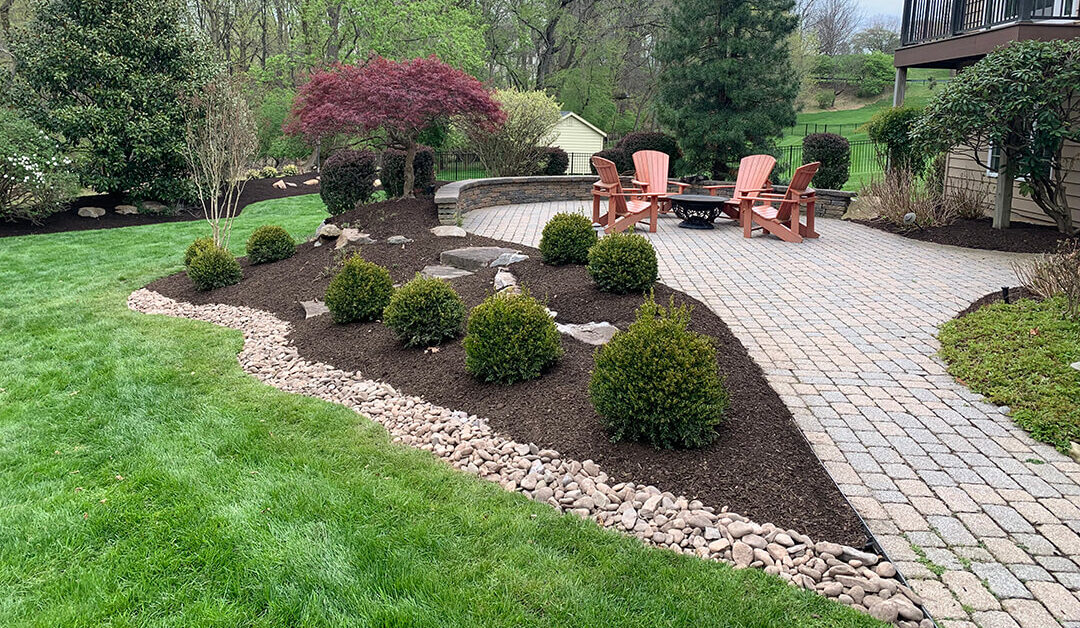Landscapes provide an array of environmental benefits. These include reducing air pollution, cooling the environment, absorbing toxic materials, and balancing the natural ecosystems.
Landscape architects use sustainable design practices to minimize the need for fertilizer and chemicals in the landscape. They also encourage the use of native plants and materials.
Reduced Carbon Dioxide Levels
Using natural, sustainable plants in the landscape helps to lower carbon dioxide levels and reduce greenhouse gasses that cause climate change. It also uses less water than conventional gardening, reducing wasteful irrigation practices. Using a mix of natural fertilizers instead of synthetic ones can improve soil health and support healthy plant growth.
Diversity in the landscape offers variety, but more diversity can lead to clarity and a lack of unity. A unified design creates harmony by balancing from side to side and front to back and repeating shapes, forms, textures, and colors throughout the landscape.
Biodiversity is essential to life, but human activity threatens wildlife populations worldwide. Climate change, changing temperatures, and new rainfall patterns are causing species to migrate or seek refuge elsewhere. Landscape architects help to manage biodiversity and habitats through several strategies, including designing dense and walkable communities that reduce vehicle emissions and sprawl, while masonry contractors can be hired to perform a similar overhaul in people’s gardens on their private property.
Cleaner Air
Landscapes create healthy air by reducing pollutants, enhancing natural processes, and promoting biodiversity. They also protect water sources, control soil erosion, and help manage stormwater runoff. Sustainable landscapes use various methods to minimize water waste, such as porous paving materials, rain gardens, and biofiltration swales.
Native plants are suited to the local climate and require less water, fertilizer, and maintenance than non-native species. They help reduce the need for chemical pest controls and support local wildlife. They also allow more meadows and groundcovers, reducing the lawn area needed.
Sustainable landscaping practices include using organic and natural fertilizers, healthier for the soil than synthetic ones. Additionally, landscape architects encourage using reclaimed and recycled materials for hardscape elements such as mulches, patio pavers, and sidewalks.
These materials also reduce the need for gas-powered mowers and other equipment that can emit toxins into the air. The principles of landscape design, such as balance and harmony, create a sense of order in a space and establish visual balance from side to side and front to back.
Regeneration of Depleted Soil
As humans embraced industrialization, natural soil began to be depleted. The pollution from factories, paved roads, and asphalt eroded the land and water surrounding them.
Using landscapes to regenerate the earth can significantly benefit the environment. Plants help reduce pollutants in the air, create a cooling effect during hot weather, absorb toxins, and balance the natural ecosystem.
Landscape architects will use different techniques to ensure the soil is regenerating correctly. Mulchs like shredded bark, straw, or wood chips add carbon to the soil, prevent erosion, and help soil conserve moisture. Adding cover crops, such as winter rye and buckwheat, will also help to regenerate the soil.
Landscapes will also contain native plants that are adapted to the local environment. These will require less water and will provide a habitat for native insects and wildlife. Using permeable paving materials, retention ponds, and rain gardens will minimize stormwater runoff and prevent polluting the local water supply.
Clean Water
Landscapes that use native plants and xeriscaping are a great way to reduce the amount of water waste. They also have a better return on investment than non-sustainable landscaping methods and offer long-term stability for the ecosystem.
McGuire explains that Landscape architects can help solve environmental problems on all levels, from small gardens to cities and even entire watersheds. They are uniquely positioned to think at these larger scales because they are trained in how human activity interacts with natural systems.
A thriving landscape must include both form and function. It is essential to study the climate, soil type, sunlight exposure, and existing flora of the region to create a landscape that will thrive. Using repetition in design is essential to maintain a unified aesthetic; too many different species, colors, or textures can lead to confusion. Landscape designers often use a style theme, such as four-season or plant textures.


